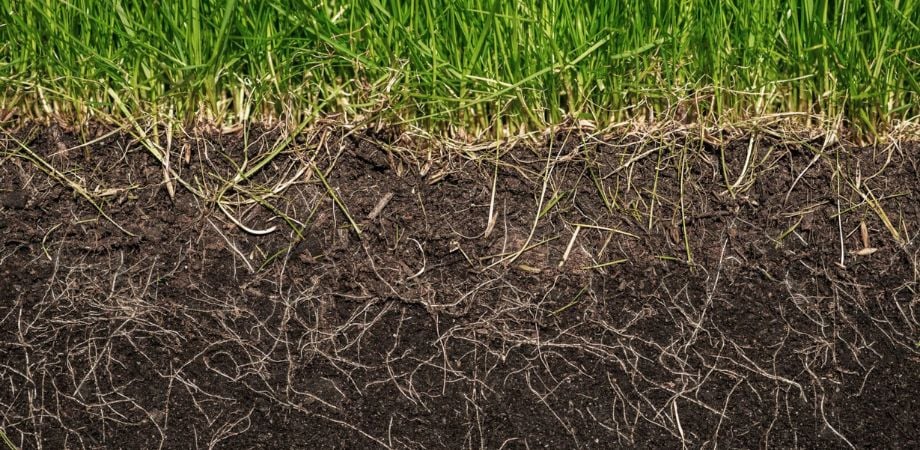Turfgrass diseases can cause problems on residential lawns, sports turf, and golf courses. Effectively managing these diseases helps keep turf healthy, resilient, and visually appealing. Learn more about some of the most common turfgrass diseases, their impact on different types of turf, and how to prevent and control them.
Common Turfgrass Diseases
Turfgrass diseases can be caused by fungi, bacteria, viruses, and environmental stressors. Understanding their symptoms is the first step toward effective disease management. Five of the most common diseases include:
- Dollar Spot: These appear as small, circular patches of bleached grass.
- Brown Patch: Similar to dollar spot, these appear as brown patches, often with a grayish border.
- Pythium Blight: This disease exhibits greasy, water-soaked patches that can expand rapidly.
- Leaf Spot: These will appear as dark spots on leaf blades and can lead to thinning.
- Rust: This disease will appear as orange and/or yellowish pustules on leaf blades.
Turfgrass Diseases in Lawn Care
Lawn care operators face unique challenges in managing turfgrass diseases. Preventative disease care is recommended.
Common Lawn Diseases
- Dollar Spot: This disease is frequent in lawns with low nitrogen.
- Brown Patch: This disease often occurs in hot, humid conditions.
- Pythium Blight: This disease thrives in poorly drained areas.
Best Practices
- Regular mowing at an appropriate height.
- Adequate fertilization to maintain healthy growth.
- Proper irrigation to avoid overwatering and underwatering.
Implementing a balanced fertilization program can help reduce dollar spot, and improving drainage and reducing shade can prevent Pythium blight outbreaks.
Turfgrass Diseases in Sports Turf
Sports fields demand high-quality turf to ensure player safety and optimal performance. Proactive turf managers will put together a schedule for athletic field disease management. Disease management in sports turf involves:
Recognizing Common Sports Turf Diseases
- Leaf Spot: This disease can cause significant damage during cool, wet weather.
- Dollar Spot: This disease causes small bleached patches to appear on grass.
- Rust: This disease reduces turf vigor and resilience.
- Necrotic Ring Spot: This disease creates sunken, dead patches that affect playability.
Management Strategies
- Regular aeration to improve soil health.
- Use of disease-resistant turfgrass varieties.
- Timely application of fungicides during high-risk periods.
Impact on Player Safety
Diseased sports turf can become uneven and increase the risk of injury to players. Maintaining healthy turf ensures a safe and consistent playing surface.
Turfgrass Diseases in Golf Courses
Golf courses require meticulous turf management to meet the aesthetic and playability standards expected by golfers. Key considerations include:
Common Golf Course Diseases
- Fairy Ring: Symptoms include rings of dead grass and/or lush growth caused by fungi.
- Anthracnose: This disease causes yellowing and dieback of grass, especially on Poa annua.
- Take-All Patch: This disease is caused by root-infecting fungi that causes turf to thin.
- Pythium Root Rot: This disease causes roots to become waterlogged, leading to rapid turf decline in warm, wet conditions.
- Pythium Root Dysfunction: This disease causes stunted root growth and yellowing turf under extreme heat.
- Large Patch: This disease causes circular, sunken patches with reddish-brown borders that can expand up to several feet in diameter.
- Spring Dead Spot: This disease appears as circular patches of dead grass in spring, with necrotic roots.
Aesthetics and Playability
Consistent turf quality enhances the golfing experience. Disease-free greens, tees, and fairways ensure smooth play and reduce maintenance costs.
Chemical Controls for Turfgrass Diseases
Fungicides play a crucial role in managing turfgrass diseases. Here are a few important things to keep in mind about fungicides:
Fungicides and Their Uses
- Contact Fungicides: These fungicides are applied onto the surface and kill fungi on contact.
- Systemic Fungicides: These fungicides are absorbed by the plant, providing internal protection.
Application Methods
- Spraying: Suitable for large areas like golf courses.
- Granular: Easy to apply on residential lawns and sports fields.
- Injection: Effective for targeting root diseases.
Fungicides, like ArmorTech Zoxy-PG, can prevent and control turf diseases, providing broad-spectrum control over a wide range of issues. Some products, like Zoxy-PG, are granular, while many more are liquid formulations. Some combine curative properties and preventative properties, too. Make sure to prevent fungicide resistance by switching chemistries.
Environmental and Safety Considerations for Turfgrass Diseases
Always follow label instructions and wear appropriate personal protective equipment during applications.
Troubleshooting Turfgrass Diseases
Accurate diagnosis and effective troubleshooting are essential for managing turfgrass diseases.
- Observe symptoms: Look for patterns, colors, and types of damage.
- Consider environmental conditions: Examine weather, soil moisture, and shade.
- Use diagnostic tools: Use soil tests, moisture meters, and a lab analysis (if needed).
Common Mistakes When Treating Turfgrass Diseases
- Over-fertilization: This can exacerbate some diseases like brown patch.
- Improper watering: Both overwatering and underwatering can stress turf. Be sure to find the right balance for your turf.
Turfgrass Disease Prevention Tips
- Maintain proper mowing heights.
- Implement a balanced fertilization program.
- Improve drainage and airflow in high-risk areas.
Seasonal Turfgrass Disease Management
Disease pressures vary with seasons, requiring specific strategies. On the golf course, spring disease applications should be targeted at diseases like snow mold, summer patch, and Pythium root rot. These are prominent diseases on bermudagrass greens. On athletic fields in the spring, dollar spot, summer patch, and fairy ring are going to be the big culprits. Having a schedule for athletic field disease management can prove beneficial. For specific strategies based on the season and the diseases you’re dealing with, reach out to an ATS rep.
Understanding common turfgrass diseases, how to spot them, and how to control them is important for lawn care operators, sports field managers, and golf course superintendents as they ensure turf is beautiful and healthy for their customers. To learn more about turf diseases, check out our resources page.












